Eliza Knight's Blog, page 14
March 15, 2016
Victorian Writers by Tara Kingston
Welcome back to History Undressed our regular third Tuesday guest blogger, Tara Kingston! Today she's written a great article on Victorian writers! I hope you enjoy it as much as I did!
Bold...Brilliant...Brave...Heroines Throughout HistoryVICTORIAN WRITERSby Tara Kingston
Greetings! I’m Tara Kingston, historical romance author and lover of all things Victorian. I’m fascinated by history through the ages, especially the bold, brilliant women who helped shape our world, and I’m delighted to be a monthly contributor to History Undressed. I’ll be sharing facts about daring women through history—some famous, some not so well-known, but all remarkable with their own unique contributions.
Today’s post takes a look at several well-known female writers of the Victorian era. Novels such as Jane Eyre and Wuthering Heights endure as classics, and certainly have inspired many romantic fantasies. The authors who wrote tales such as these often used pseudonyms in order to present a more masculine persona and avoid scandal. Now for a look at some of these brilliant and bold Victorian authors.

Charlotte Brontë – The oldest of the legendary Brontë sisters, Charlotte Bronte published one of the best known gothic novels of all time, Jane Eyre, in 1847. The tragic love story between Mr. Rochester and governess Jane Eyre (complete with a mad woman in the attic…talk about an obstacle to true love!), endures as one of my very favorite novels.
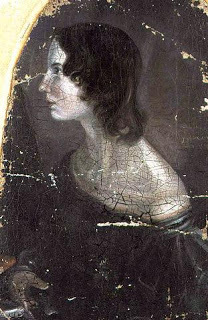
Emily Brontë – Miss Brontë’s classic Wuthering Heights is one of my most all-time favorite novels. Originally published in 1848 under the pseudonym Ellis Bell, Wuthering Heights remains a classic. Unsurprising, really…after all, who could ever forget the passion and tragedy of Heathcliff and Cathy?
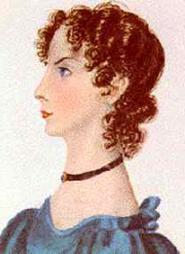
Anne Brontë – The youngest of the Brontë sisters was an accomplished author in her own right, publishing Agnes Grey and The Tenant of Wildfell Hall in 1848 under the pen name Acton Bell. Like her sister Emily and brother Brantwell (both took ill and died in 1848), Anne Brontë’s life was cut short when she succumbed to illness in May 1849.

Mary Elizabeth Braddon – Following years as an actress using the stage name Mary Seyton, Mary Elizabeth Braddon became a successful and prolific author. Using the pen name M.E. Braddon, Mary Elizabeth Braddon penned melodramatic sensation novels with great success. Perhaps best known for her 1862 sensation novel, Lady Audley’s Secret, Mary Braddon also founded Belgravia magazine, a literary publication that included serialized novels, non-fiction, and poetry.

Louisa May Alcott – Miss Alcott’s classic Little Women, the story of four sisters coming of age during the Civil War, is perhaps her best known work. Adapted for the screen many times, the character Jo (based on Louisa May Alcott) has been portrayed by actresses including Katharine Hepburn, June Allyson, and Winona Ryder. Though best-known as the author of Little Women, Miss Alcott was a prolific writer. She published more than two dozen books and story collections, including Hospital Stories, inspired by her experiences as a Civil War nurse.
Sources:http://maryelizabethbraddon.com/http://www.biography.com/people/anne-bront%C3%AB-11919986http://www.biography.com/people/charlotte-bront-11919959http://www.biography.com/people/emily-bronte-9227381http://www.biography.com/people/louisa-may-alcott-9179520#acclaimed-author
All photographs are in the public domain.
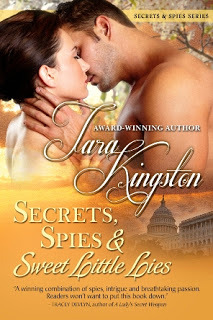 About The Author:
About The Author:
Award-winning author Tara Kingston writes historical romance laced with intrigue, danger, and adventures of the heart. A Southern belle-out-of-water in a quaint Pennsylvania town, she lives her own love story with her real-life hero in a cozy Victorian. The mother of two sons, Tara's a former librarian whose love of books is evident in her popping-at-the-seams bookcases. It goes without saying that Tara's husband is thankful for the invention of digital books, thereby eliminating the need for yet another set of shelves. When she's not writing, reading, or burning dinner, Tara enjoys cycling, hiking, and cheering on her favorite football team. Connect with Tara at www.tarakingston.com and on Facebook: https://www.facebook.com/AuthorTaraKingston
In a world where a man’s loyalty doesn’t depend on the color of a uniform, danger, intrigue, and passion are facts of life for the men and women of Tara’s Secrets & Spies series, historical romances set against the backdrop of the Civil War.
Bold...Brilliant...Brave...Heroines Throughout HistoryVICTORIAN WRITERSby Tara Kingston
Greetings! I’m Tara Kingston, historical romance author and lover of all things Victorian. I’m fascinated by history through the ages, especially the bold, brilliant women who helped shape our world, and I’m delighted to be a monthly contributor to History Undressed. I’ll be sharing facts about daring women through history—some famous, some not so well-known, but all remarkable with their own unique contributions.
Today’s post takes a look at several well-known female writers of the Victorian era. Novels such as Jane Eyre and Wuthering Heights endure as classics, and certainly have inspired many romantic fantasies. The authors who wrote tales such as these often used pseudonyms in order to present a more masculine persona and avoid scandal. Now for a look at some of these brilliant and bold Victorian authors.

Charlotte Brontë – The oldest of the legendary Brontë sisters, Charlotte Bronte published one of the best known gothic novels of all time, Jane Eyre, in 1847. The tragic love story between Mr. Rochester and governess Jane Eyre (complete with a mad woman in the attic…talk about an obstacle to true love!), endures as one of my very favorite novels.

Emily Brontë – Miss Brontë’s classic Wuthering Heights is one of my most all-time favorite novels. Originally published in 1848 under the pseudonym Ellis Bell, Wuthering Heights remains a classic. Unsurprising, really…after all, who could ever forget the passion and tragedy of Heathcliff and Cathy?

Anne Brontë – The youngest of the Brontë sisters was an accomplished author in her own right, publishing Agnes Grey and The Tenant of Wildfell Hall in 1848 under the pen name Acton Bell. Like her sister Emily and brother Brantwell (both took ill and died in 1848), Anne Brontë’s life was cut short when she succumbed to illness in May 1849.

Mary Elizabeth Braddon – Following years as an actress using the stage name Mary Seyton, Mary Elizabeth Braddon became a successful and prolific author. Using the pen name M.E. Braddon, Mary Elizabeth Braddon penned melodramatic sensation novels with great success. Perhaps best known for her 1862 sensation novel, Lady Audley’s Secret, Mary Braddon also founded Belgravia magazine, a literary publication that included serialized novels, non-fiction, and poetry.

Louisa May Alcott – Miss Alcott’s classic Little Women, the story of four sisters coming of age during the Civil War, is perhaps her best known work. Adapted for the screen many times, the character Jo (based on Louisa May Alcott) has been portrayed by actresses including Katharine Hepburn, June Allyson, and Winona Ryder. Though best-known as the author of Little Women, Miss Alcott was a prolific writer. She published more than two dozen books and story collections, including Hospital Stories, inspired by her experiences as a Civil War nurse.
Sources:http://maryelizabethbraddon.com/http://www.biography.com/people/anne-bront%C3%AB-11919986http://www.biography.com/people/charlotte-bront-11919959http://www.biography.com/people/emily-bronte-9227381http://www.biography.com/people/louisa-may-alcott-9179520#acclaimed-author
All photographs are in the public domain.
 About The Author:
About The Author:Award-winning author Tara Kingston writes historical romance laced with intrigue, danger, and adventures of the heart. A Southern belle-out-of-water in a quaint Pennsylvania town, she lives her own love story with her real-life hero in a cozy Victorian. The mother of two sons, Tara's a former librarian whose love of books is evident in her popping-at-the-seams bookcases. It goes without saying that Tara's husband is thankful for the invention of digital books, thereby eliminating the need for yet another set of shelves. When she's not writing, reading, or burning dinner, Tara enjoys cycling, hiking, and cheering on her favorite football team. Connect with Tara at www.tarakingston.com and on Facebook: https://www.facebook.com/AuthorTaraKingston
In a world where a man’s loyalty doesn’t depend on the color of a uniform, danger, intrigue, and passion are facts of life for the men and women of Tara’s Secrets & Spies series, historical romances set against the backdrop of the Civil War.
Published on March 15, 2016 02:00
March 14, 2016
Video of the Week: This is Your Fight Song
Because I just love the rendition of this song and the video is so beautiful! Enjoy!

Check out Eliza Knight's Upcoming releases!
Highlander UndoneTaken by the Highlander (in the Captured by a Celtic Warrior Anthology)Claimed by the Warrior

Check out Eliza Knight's Upcoming releases!
Highlander UndoneTaken by the Highlander (in the Captured by a Celtic Warrior Anthology)Claimed by the Warrior
Published on March 14, 2016 03:00
March 8, 2016
Pirate Articles - The Terms and Conditions of Pirate Ships
Believe it or not, pirates operated under a democracy. It was understood that to be a successful crew, conduct had to be governed by rules and regulations called the ship’s articles. Also known as articles of agreement or pirate codes, these terms and conditions were the law and order of pirate communities. Detailed obligations, destinations, the divvying up of shares, compensation for injuries, and even punishments for breaking the rules were written prior to weighing anchor.
Each crewman had input into what went into the articles and, as a whole, the agreement was approved and signed—or in the case of the illiterate, placed a mark on the document. The men swore an oath to uphold the articles upon a bible or symbolic weapon. By pledging this allegiance, the crewmen were entitled to the rights to vote, bear arms, and fair shares of the booty, whether that be treasure, food, or liquor. New recruits, a.k.a. those captured from other ships, were often forced into signing the articles, too—especially trained men with important jobs such as carpenters, surgeons, and navigators.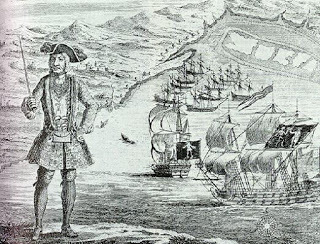 Black BartSome articles written during the Golden Age of piracy still survive. The following is probably the most famous. These are the articles of the Royal Fortune captained by Bartholomew Roberts, more notoriously known as Black Bart.
Black BartSome articles written during the Golden Age of piracy still survive. The following is probably the most famous. These are the articles of the Royal Fortune captained by Bartholomew Roberts, more notoriously known as Black Bart.
Every man shall have an equal vote in affairs of moment. He shall have an equal title to the fresh provisions or strong liquors at any time seized, and shall use them at pleasure unless a scarcity may make it necessary for the common good that a retrenchment may be voted.Every man shall be called fairly in turn by the list on board of prizes, because over and above their proper share, they are allowed a shift of clothes. But if they defraud the company to the value of even one dollar in plate, jewels or money, they shall be marooned. If any man rob another he shall have his nose and ears slit, and be put ashore where he shall be sure to encounter hardships.None shall game for money either with dice or cards.The lights and candles should be put out at eight at night, and if any of the crew desire to drink after that hour they shall sit upon the open deck without lights.Each man shall keep his piece, cutlass and pistols at all times clean and ready for action.No boy or woman to be allowed amongst them. If any man shall be found seducing any of the latter sex and carrying her to sea in disguise he shall suffer death.He that shall desert the ship or his quarters in time of battle shall be punished by death or marooning.None shall strike another on board the ship, but every man's quarrel shall be ended on shore by sword or pistol in this manner. At the word of command from the quartermaster, each man being previously placed back to back, shall turn and fire immediately. If any man do not, the quartermaster shall knock the piece out of his hand. If both miss their aim they shall take to their cutlasses, and he that draw the first blood shall be declared the victor.No man shall talk of breaking up their way of living till each has a share of 1,000. Every man who shall become a cripple or lose a limb in the service shall have 800 pieces of eight from the common stock and for lesser hurts proportionately.The captain and the quartermaster shall each receive two shares of a prize, the master gunner and boatswain, one and one half shares, all other officers one and one quarter, and private gentlemen of fortune one share each.The musicians shall have rest on the Sabbath Day only by right. On all other days by favor only.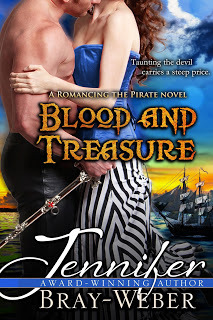 Available where great ebooks are sold!Who knew pirates could be so impartial and self-governing?
Available where great ebooks are sold!Who knew pirates could be so impartial and self-governing?
About the Author
Jennifer is the award-winning author of the Romancing the Pirate series. Visit her at www.jbrayweber.com or join her mailing list for sneak peeks, excerpts, and giveaways.
Each crewman had input into what went into the articles and, as a whole, the agreement was approved and signed—or in the case of the illiterate, placed a mark on the document. The men swore an oath to uphold the articles upon a bible or symbolic weapon. By pledging this allegiance, the crewmen were entitled to the rights to vote, bear arms, and fair shares of the booty, whether that be treasure, food, or liquor. New recruits, a.k.a. those captured from other ships, were often forced into signing the articles, too—especially trained men with important jobs such as carpenters, surgeons, and navigators.
 Black BartSome articles written during the Golden Age of piracy still survive. The following is probably the most famous. These are the articles of the Royal Fortune captained by Bartholomew Roberts, more notoriously known as Black Bart.
Black BartSome articles written during the Golden Age of piracy still survive. The following is probably the most famous. These are the articles of the Royal Fortune captained by Bartholomew Roberts, more notoriously known as Black Bart.Every man shall have an equal vote in affairs of moment. He shall have an equal title to the fresh provisions or strong liquors at any time seized, and shall use them at pleasure unless a scarcity may make it necessary for the common good that a retrenchment may be voted.Every man shall be called fairly in turn by the list on board of prizes, because over and above their proper share, they are allowed a shift of clothes. But if they defraud the company to the value of even one dollar in plate, jewels or money, they shall be marooned. If any man rob another he shall have his nose and ears slit, and be put ashore where he shall be sure to encounter hardships.None shall game for money either with dice or cards.The lights and candles should be put out at eight at night, and if any of the crew desire to drink after that hour they shall sit upon the open deck without lights.Each man shall keep his piece, cutlass and pistols at all times clean and ready for action.No boy or woman to be allowed amongst them. If any man shall be found seducing any of the latter sex and carrying her to sea in disguise he shall suffer death.He that shall desert the ship or his quarters in time of battle shall be punished by death or marooning.None shall strike another on board the ship, but every man's quarrel shall be ended on shore by sword or pistol in this manner. At the word of command from the quartermaster, each man being previously placed back to back, shall turn and fire immediately. If any man do not, the quartermaster shall knock the piece out of his hand. If both miss their aim they shall take to their cutlasses, and he that draw the first blood shall be declared the victor.No man shall talk of breaking up their way of living till each has a share of 1,000. Every man who shall become a cripple or lose a limb in the service shall have 800 pieces of eight from the common stock and for lesser hurts proportionately.The captain and the quartermaster shall each receive two shares of a prize, the master gunner and boatswain, one and one half shares, all other officers one and one quarter, and private gentlemen of fortune one share each.The musicians shall have rest on the Sabbath Day only by right. On all other days by favor only.
 Available where great ebooks are sold!Who knew pirates could be so impartial and self-governing?
Available where great ebooks are sold!Who knew pirates could be so impartial and self-governing?About the Author
Jennifer is the award-winning author of the Romancing the Pirate series. Visit her at www.jbrayweber.com or join her mailing list for sneak peeks, excerpts, and giveaways.
Published on March 08, 2016 02:30
March 7, 2016
Video of the Week: Scotland from Above - Edinburgh to Fingal's Cave
Enjoy this awesome documentary with great views of Scotland!!
Check out Eliza Knight's New and Upcoming Releases!
Highlander UndoneTaken by the Highlander (in the Captured by a Celtic Warrior Anthology)Claimed by the Warrior
Check out Eliza Knight's New and Upcoming Releases!
Highlander UndoneTaken by the Highlander (in the Captured by a Celtic Warrior Anthology)Claimed by the Warrior
Published on March 07, 2016 03:00
March 1, 2016
AMERICA’S FIRST DAUGHTER: Things That Didn’t Make It Into The Book (Part One) by Stephanie Dray and Laura Kamoie
Welcome to History Undressed, guest authors, Stephanie Dray and Laura Kamoie! Enjoy their post today on things that didn't make it into their new book: America's First Daughter!
AMERICA’S FIRST DAUGHTER: Things That Didn’t Make It Into The Book (Part One)Patsy Jefferson’s Later LifeBy Stephanie Dray and Laura Kamoie
Today we are absolutely thrilled to be celebrating the release of our new book, America’s First Daughter, which portrays the relationship between Martha “Patsy” Jefferson Randolph and her famous father, Thomas Jefferson, and explores the sacrifices Patsy made and the lies she told to protect him, his legacy, and the new nation he founded.
America’s First Daughter is more than six hundred pages long and we still couldn’t fit it all in, so as we mentioned in our author’s note, some very painful omissions were made. Thankfully, we can post about things that aren’t in the book, but that we think will are historically significant and will be interesting to readers.
Because we wanted to frame the novel with the Jefferson family’s letters--the writing, reading, editing and publishing of them, our novel ends in 1830, years before Martha “Patsy” Jefferson Randolph’s death. As a consequence, a number of things about her later life never made it into the book because they occurred after this date.
The Death Bed DenialAmong the things that happened after our novel ends include an event in the springtime of 1835, when an ailing Patsy Jefferson believed she was near death and called her children to her bedside. Patsy wanted to make a division of what was left of her property--including her human property--and she said she wanted to do it while her head was still “perfectly clear.”
She had a plan for dividing her cash, stocks, and items that had belonged to her father. She also had a plan for her slaves; she wished to emancipate two of the daughters of Burwell Colbert, who had been Jefferson’s personal butler and valet at the end of his life. Patsy also directed her children to give Sally Hemings, Betsy Hemings and the gardener, Wormley Hughes, “their time.” This was a method by which Virginians could free slaves without forcing them to leave the state, as was required under the law at the time. All three had lived in Virginia as free people since Jefferson’s death, but Patsy wanted this understood by her children.
And yet, she did not free all her slaves, nor did she forget her lifelong mission to protect her father’s reputation even at the expense of those who he’d held in bondage. We were struck by the fact that as her own mortal life came to a close, Patsy Jefferson’s mind was fixed on her father’s immortal legacy. Clearly, she remained worried about the Sally Hemings scandal until the very end.
She told her grown children that Jefferson’s farm records would prove that he and Sally Hemings were far apart when Sally’s son Eston (who was rumored to look very much like Jefferson) was born. Patsy told her sons to always remember this and defend the character of their grandfather.
In fact, Jefferson’s farm records weigh in favor of the proposition that he was at Monticello (and presumably near to Sally) within nine months of the birth of each of her children. And today most historians--as well as the Thomas Jefferson Foundation--believe that the weight of the historical evidence supports the idea that Jefferson fathered the children of Sally Hemings. If true--and we believe it is--it is simply not credible that his daughter did not know about it.
And if she knew, then Patsy Jefferson was the kind of person who was willing to lie to her own children with what she believed might be her very last breath.
To us, that spoke volumes about her, coloring every choice we made in the novel.
The Death of “Randolph of Roanoke”Though Patsy and John Randolph were foes, his death presented her with a dilemma. In his last will, the colorful and acerbic politician who had fought with Patsy’s husband, her father, and even formed his own political party, formally emancipated his slaves, nearly four hundred in all. They weren’t just emancipated, but also given land in Ohio upon which to resettle. John’s heirs and assigns--Martha’s relations--urged her and her financially struggling children to join the lawsuit to void this will, keep the slaves in bondage, and divide “the plunder.”
Patsy said she would never support any effort to keep those slaves in bondage, and persuaded her children to follow her example. And as Virginian politics shifted away from anti-slavery sentiments to advocating slavery as a biblically condoned societal good, she and her children did not want to be part of a slave-holding society, and sought to leave, concluding that Virginia was “no longer a home for the family of Thomas Jefferson.”
But when it came to slavery, Patsy was susceptible to the same moral failings as her father, as yet another incident proves…
Martha Ann Colbert and the Whipping of SallyThe enslaved woman named Sally that is most famously associated with the Jeffersons is Sally Hemings. However, it’s a different Sally altogether who was at the receiving end of Patsy Jefferson’s discipline in 1833. The incident is notable because it’s the only documented instance of Patsy disciplining the enslaved human beings she said she felt “bound by the most sacred of all duties to protect.”
According to Patsy’s daughter, Cornelia, this enslaved girl named Sally was sent to a constable to be flogged after some infraction. But when she later stole a pair of stockings, the sixty-one year-old Martha Jefferson Randolph decided to take up the whip herself. “What disciplinarians we have turned out to be,” Cornelia wrote, adding that a Hemings relation judged the whipping to be “not enough” to change Sally’s behavior.
As earlier mentioned, in 1835, Patsy Jefferson thought she was dying. And having called her children together, she directed the emancipation of several slaves including Martha Ann Colbert. Poor fortune indeed for Martha Ann that Patsy did not actually die in 1835. The next year, as Patsy’s children began to disperse and ask for her financial help--presumably in the form of gifting them slaves--Patsy wrote that she had “no right to sacrifice the happiness of a fellow creature black or white.”
And yet, like her father, knowing that she didn’t have that right didn’t stop her. In the end, acknowledging it was “an evil” to separate this young woman from her family, Patsy agreed to give Martha Ann to her son, Lewis, who was moving to Arkansas. The ultimate fate of Martha Ann Colbert isn’t known--since Lewis died soon after--but it is clear evidence that like her father before her, in the crucible of financial difficulties, Patsy Jefferson put the interests of her white children ahead of moral principles. When she did so, perhaps she justified it as her father did when he wrote: “justice is on one scale, and self-preservation on the other.”
Stay tuned for more posts in this series of Things That Didn’t Make It Into The Book. And thanks for reading!
~Stephanie and Laura
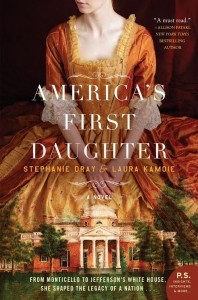 About America’s First Daughter:In a compelling, richly researched novel that draws from thousands of letters and original sources, bestselling authors Stephanie Dray and Laura Kamoie tell the fascinating, untold story of Thomas Jefferson’s eldest daughter, Martha “Patsy” Jefferson Randolph—a woman who kept the secrets of our most enigmatic founding father and shaped an American legacy.
About America’s First Daughter:In a compelling, richly researched novel that draws from thousands of letters and original sources, bestselling authors Stephanie Dray and Laura Kamoie tell the fascinating, untold story of Thomas Jefferson’s eldest daughter, Martha “Patsy” Jefferson Randolph—a woman who kept the secrets of our most enigmatic founding father and shaped an American legacy.
From her earliest days, Patsy Jefferson knows that though her father loves his family dearly, his devotion to his country runs deeper still. As Thomas Jefferson’s oldest daughter, she becomes his helpmate, protector, and constant companion in the wake of her mother’s death, traveling with him when he becomes American minister to France.
It is in Paris, at the glittering court and among the first tumultuous days of revolution, that fifteen-year-old Patsy learns about her father’s troubling liaison with Sally Hemings, a slave girl her own age. Meanwhile, Patsy has fallen in love—with her father’s protégé William Short, a staunch abolitionist and ambitious diplomat. Torn between love, principles, and the bonds of family, Patsy questions whether she can choose a life as William’s wife and still be a devoted daughter.
Her choice will follow her in the years to come, to Virginia farmland, Monticello, and even the White House. And as scandal, tragedy, and poverty threaten her family, Patsy must decide how much she will sacrifice to protect her father's reputation, in the process defining not just his political legacy, but that of the nation he founded.
Order on Amazon | B&N | iBooks | HarperCollins | Kobo Learn more about the book Advanced Praise for America’s First Daughter:“America’s First Daughter brings a turbulent era to vivid life. All the conflicts and complexities of the Early Republic are mirrored in Patsy’s story. It’s breathlessly exciting and heartbreaking by turns-a personal and political page-turner.” (Donna Thorland, author of The Turncoat)
“Painstakingly researched, beautifully hewn, compulsively readable -- this enlightening literary journey takes us from Monticello to revolutionary Paris to the Jefferson White House, revealing remarkable historical details, dark family secrets, and bringing to life the colorful cast of characters who conceived of our new nation. A must read.” (Allison Pataki, New York Times bestselling author of The Accidental Empress)
About the Authors:
 Stephanie Dray is an award-winning, bestselling and two-time RITA award nominated author of historical women’s fiction. Her critically acclaimed series about Cleopatra’s daughter has been translated into eight different languages and won NJRW's Golden Leaf. As Stephanie Draven, she is a national bestselling author of genre fiction and American-set historical women's fiction. She is a frequent panelist and presenter at national writing conventions and lives near the nation's capital. Before she became a novelist, she was a lawyer, a game designer, and a teacher. Now she uses the stories of women in history to inspire the young women of today.Stephanie’s Book Club | Stephanie’s Website | Facebook | Twitter | Newsletter
Stephanie Dray is an award-winning, bestselling and two-time RITA award nominated author of historical women’s fiction. Her critically acclaimed series about Cleopatra’s daughter has been translated into eight different languages and won NJRW's Golden Leaf. As Stephanie Draven, she is a national bestselling author of genre fiction and American-set historical women's fiction. She is a frequent panelist and presenter at national writing conventions and lives near the nation's capital. Before she became a novelist, she was a lawyer, a game designer, and a teacher. Now she uses the stories of women in history to inspire the young women of today.Stephanie’s Book Club | Stephanie’s Website | Facebook | Twitter | Newsletter
 Laura Kamoie has always been fascinated by the people, stories, and physical presence of the past, which led her to a lifetime of historical and archaeological study and training. She holds a doctoral degree in early American history from The College of William and Mary, published two non-fiction books on early America, and most recently held the position of Associate Professor of History at the U.S. Naval Academy before transitioning to a full-time career writing genre fiction as the New York Times bestselling author, Laura Kaye. Her debut historical novel, America's First Daughter, co-authored with Stephanie Dray, allowed her the exciting opportunity to combine her love of history with her passion for storytelling. Laura lives among the colonial charm of Annapolis, Maryland with her husband and two daughters.Laura’s Website | Facebook | Twitter | Newsletter Sign-Up
Laura Kamoie has always been fascinated by the people, stories, and physical presence of the past, which led her to a lifetime of historical and archaeological study and training. She holds a doctoral degree in early American history from The College of William and Mary, published two non-fiction books on early America, and most recently held the position of Associate Professor of History at the U.S. Naval Academy before transitioning to a full-time career writing genre fiction as the New York Times bestselling author, Laura Kaye. Her debut historical novel, America's First Daughter, co-authored with Stephanie Dray, allowed her the exciting opportunity to combine her love of history with her passion for storytelling. Laura lives among the colonial charm of Annapolis, Maryland with her husband and two daughters.Laura’s Website | Facebook | Twitter | Newsletter Sign-Up
AMERICA’S FIRST DAUGHTER: Things That Didn’t Make It Into The Book (Part One)Patsy Jefferson’s Later LifeBy Stephanie Dray and Laura Kamoie
Today we are absolutely thrilled to be celebrating the release of our new book, America’s First Daughter, which portrays the relationship between Martha “Patsy” Jefferson Randolph and her famous father, Thomas Jefferson, and explores the sacrifices Patsy made and the lies she told to protect him, his legacy, and the new nation he founded.
America’s First Daughter is more than six hundred pages long and we still couldn’t fit it all in, so as we mentioned in our author’s note, some very painful omissions were made. Thankfully, we can post about things that aren’t in the book, but that we think will are historically significant and will be interesting to readers.
Because we wanted to frame the novel with the Jefferson family’s letters--the writing, reading, editing and publishing of them, our novel ends in 1830, years before Martha “Patsy” Jefferson Randolph’s death. As a consequence, a number of things about her later life never made it into the book because they occurred after this date.
The Death Bed DenialAmong the things that happened after our novel ends include an event in the springtime of 1835, when an ailing Patsy Jefferson believed she was near death and called her children to her bedside. Patsy wanted to make a division of what was left of her property--including her human property--and she said she wanted to do it while her head was still “perfectly clear.”
She had a plan for dividing her cash, stocks, and items that had belonged to her father. She also had a plan for her slaves; she wished to emancipate two of the daughters of Burwell Colbert, who had been Jefferson’s personal butler and valet at the end of his life. Patsy also directed her children to give Sally Hemings, Betsy Hemings and the gardener, Wormley Hughes, “their time.” This was a method by which Virginians could free slaves without forcing them to leave the state, as was required under the law at the time. All three had lived in Virginia as free people since Jefferson’s death, but Patsy wanted this understood by her children.
And yet, she did not free all her slaves, nor did she forget her lifelong mission to protect her father’s reputation even at the expense of those who he’d held in bondage. We were struck by the fact that as her own mortal life came to a close, Patsy Jefferson’s mind was fixed on her father’s immortal legacy. Clearly, she remained worried about the Sally Hemings scandal until the very end.
She told her grown children that Jefferson’s farm records would prove that he and Sally Hemings were far apart when Sally’s son Eston (who was rumored to look very much like Jefferson) was born. Patsy told her sons to always remember this and defend the character of their grandfather.
In fact, Jefferson’s farm records weigh in favor of the proposition that he was at Monticello (and presumably near to Sally) within nine months of the birth of each of her children. And today most historians--as well as the Thomas Jefferson Foundation--believe that the weight of the historical evidence supports the idea that Jefferson fathered the children of Sally Hemings. If true--and we believe it is--it is simply not credible that his daughter did not know about it.
And if she knew, then Patsy Jefferson was the kind of person who was willing to lie to her own children with what she believed might be her very last breath.
To us, that spoke volumes about her, coloring every choice we made in the novel.
The Death of “Randolph of Roanoke”Though Patsy and John Randolph were foes, his death presented her with a dilemma. In his last will, the colorful and acerbic politician who had fought with Patsy’s husband, her father, and even formed his own political party, formally emancipated his slaves, nearly four hundred in all. They weren’t just emancipated, but also given land in Ohio upon which to resettle. John’s heirs and assigns--Martha’s relations--urged her and her financially struggling children to join the lawsuit to void this will, keep the slaves in bondage, and divide “the plunder.”
Patsy said she would never support any effort to keep those slaves in bondage, and persuaded her children to follow her example. And as Virginian politics shifted away from anti-slavery sentiments to advocating slavery as a biblically condoned societal good, she and her children did not want to be part of a slave-holding society, and sought to leave, concluding that Virginia was “no longer a home for the family of Thomas Jefferson.”
But when it came to slavery, Patsy was susceptible to the same moral failings as her father, as yet another incident proves…
Martha Ann Colbert and the Whipping of SallyThe enslaved woman named Sally that is most famously associated with the Jeffersons is Sally Hemings. However, it’s a different Sally altogether who was at the receiving end of Patsy Jefferson’s discipline in 1833. The incident is notable because it’s the only documented instance of Patsy disciplining the enslaved human beings she said she felt “bound by the most sacred of all duties to protect.”
According to Patsy’s daughter, Cornelia, this enslaved girl named Sally was sent to a constable to be flogged after some infraction. But when she later stole a pair of stockings, the sixty-one year-old Martha Jefferson Randolph decided to take up the whip herself. “What disciplinarians we have turned out to be,” Cornelia wrote, adding that a Hemings relation judged the whipping to be “not enough” to change Sally’s behavior.
As earlier mentioned, in 1835, Patsy Jefferson thought she was dying. And having called her children together, she directed the emancipation of several slaves including Martha Ann Colbert. Poor fortune indeed for Martha Ann that Patsy did not actually die in 1835. The next year, as Patsy’s children began to disperse and ask for her financial help--presumably in the form of gifting them slaves--Patsy wrote that she had “no right to sacrifice the happiness of a fellow creature black or white.”
And yet, like her father, knowing that she didn’t have that right didn’t stop her. In the end, acknowledging it was “an evil” to separate this young woman from her family, Patsy agreed to give Martha Ann to her son, Lewis, who was moving to Arkansas. The ultimate fate of Martha Ann Colbert isn’t known--since Lewis died soon after--but it is clear evidence that like her father before her, in the crucible of financial difficulties, Patsy Jefferson put the interests of her white children ahead of moral principles. When she did so, perhaps she justified it as her father did when he wrote: “justice is on one scale, and self-preservation on the other.”
Stay tuned for more posts in this series of Things That Didn’t Make It Into The Book. And thanks for reading!
~Stephanie and Laura
 About America’s First Daughter:In a compelling, richly researched novel that draws from thousands of letters and original sources, bestselling authors Stephanie Dray and Laura Kamoie tell the fascinating, untold story of Thomas Jefferson’s eldest daughter, Martha “Patsy” Jefferson Randolph—a woman who kept the secrets of our most enigmatic founding father and shaped an American legacy.
About America’s First Daughter:In a compelling, richly researched novel that draws from thousands of letters and original sources, bestselling authors Stephanie Dray and Laura Kamoie tell the fascinating, untold story of Thomas Jefferson’s eldest daughter, Martha “Patsy” Jefferson Randolph—a woman who kept the secrets of our most enigmatic founding father and shaped an American legacy.From her earliest days, Patsy Jefferson knows that though her father loves his family dearly, his devotion to his country runs deeper still. As Thomas Jefferson’s oldest daughter, she becomes his helpmate, protector, and constant companion in the wake of her mother’s death, traveling with him when he becomes American minister to France.
It is in Paris, at the glittering court and among the first tumultuous days of revolution, that fifteen-year-old Patsy learns about her father’s troubling liaison with Sally Hemings, a slave girl her own age. Meanwhile, Patsy has fallen in love—with her father’s protégé William Short, a staunch abolitionist and ambitious diplomat. Torn between love, principles, and the bonds of family, Patsy questions whether she can choose a life as William’s wife and still be a devoted daughter.
Her choice will follow her in the years to come, to Virginia farmland, Monticello, and even the White House. And as scandal, tragedy, and poverty threaten her family, Patsy must decide how much she will sacrifice to protect her father's reputation, in the process defining not just his political legacy, but that of the nation he founded.
Order on Amazon | B&N | iBooks | HarperCollins | Kobo Learn more about the book Advanced Praise for America’s First Daughter:“America’s First Daughter brings a turbulent era to vivid life. All the conflicts and complexities of the Early Republic are mirrored in Patsy’s story. It’s breathlessly exciting and heartbreaking by turns-a personal and political page-turner.” (Donna Thorland, author of The Turncoat)
“Painstakingly researched, beautifully hewn, compulsively readable -- this enlightening literary journey takes us from Monticello to revolutionary Paris to the Jefferson White House, revealing remarkable historical details, dark family secrets, and bringing to life the colorful cast of characters who conceived of our new nation. A must read.” (Allison Pataki, New York Times bestselling author of The Accidental Empress)
About the Authors:
 Stephanie Dray is an award-winning, bestselling and two-time RITA award nominated author of historical women’s fiction. Her critically acclaimed series about Cleopatra’s daughter has been translated into eight different languages and won NJRW's Golden Leaf. As Stephanie Draven, she is a national bestselling author of genre fiction and American-set historical women's fiction. She is a frequent panelist and presenter at national writing conventions and lives near the nation's capital. Before she became a novelist, she was a lawyer, a game designer, and a teacher. Now she uses the stories of women in history to inspire the young women of today.Stephanie’s Book Club | Stephanie’s Website | Facebook | Twitter | Newsletter
Stephanie Dray is an award-winning, bestselling and two-time RITA award nominated author of historical women’s fiction. Her critically acclaimed series about Cleopatra’s daughter has been translated into eight different languages and won NJRW's Golden Leaf. As Stephanie Draven, she is a national bestselling author of genre fiction and American-set historical women's fiction. She is a frequent panelist and presenter at national writing conventions and lives near the nation's capital. Before she became a novelist, she was a lawyer, a game designer, and a teacher. Now she uses the stories of women in history to inspire the young women of today.Stephanie’s Book Club | Stephanie’s Website | Facebook | Twitter | Newsletter Laura Kamoie has always been fascinated by the people, stories, and physical presence of the past, which led her to a lifetime of historical and archaeological study and training. She holds a doctoral degree in early American history from The College of William and Mary, published two non-fiction books on early America, and most recently held the position of Associate Professor of History at the U.S. Naval Academy before transitioning to a full-time career writing genre fiction as the New York Times bestselling author, Laura Kaye. Her debut historical novel, America's First Daughter, co-authored with Stephanie Dray, allowed her the exciting opportunity to combine her love of history with her passion for storytelling. Laura lives among the colonial charm of Annapolis, Maryland with her husband and two daughters.Laura’s Website | Facebook | Twitter | Newsletter Sign-Up
Laura Kamoie has always been fascinated by the people, stories, and physical presence of the past, which led her to a lifetime of historical and archaeological study and training. She holds a doctoral degree in early American history from The College of William and Mary, published two non-fiction books on early America, and most recently held the position of Associate Professor of History at the U.S. Naval Academy before transitioning to a full-time career writing genre fiction as the New York Times bestselling author, Laura Kaye. Her debut historical novel, America's First Daughter, co-authored with Stephanie Dray, allowed her the exciting opportunity to combine her love of history with her passion for storytelling. Laura lives among the colonial charm of Annapolis, Maryland with her husband and two daughters.Laura’s Website | Facebook | Twitter | Newsletter Sign-Up
Published on March 01, 2016 08:00
Taking a Historical Thermal Bath Today by Kathleen Bittner Roth
Welcome back to History Undressed, our regular first Tuesday blogger and author, Kathleen Bittner Roth! I don't know about you, but I love a good bath, and a hot tub is awesome, too. But a thermal bath??? Now you're talking! Enjoy!
TAKING A HISTORICAL THERMAL BATH TODAYby Kathleen Bittner Roth
As an author, I can live anywhere. Currently, I reside in beautiful Budapest, Hungary. For how long, I do not know, but while I’m here, I am happily making the best of it.
Making the best of it?
OMG, what an understatement!
Budapest is such an amazing city. Merely stepping out my front door means a remarkable day is in the making. My tree-lined street is an enclave unto its own—venerable buildings adorned with statues and all manner of baroque ornamentation, a post office, hair salons, vegetable stands, restaurants, pubs, super market. A couple hundred feet to my right is a trolley stop. In minutes I can connect to all kinds of efficient transportation in the city.
But turn left out my front door, walk to the end of the block, and I’m in beautiful City Park where I can find a castle, a lake, a skating palace (in summer the water is used for boating), museums, restaurants, a zoo, and one of Hungary’s many famous thermal baths.
Did I say thermal baths?
Oh, yeah!
Budapest sits on a huge underground thermal lake so the city is thick with Turkish baths, some of which date back centuries. Stepping into them is like stepping into an Ottoman Palace. Here are my favorites:

Szechényi Baths: This thermal bath is my favorite. It is one of the largest spa complexes in Europe. And glory be, if this exquisite facility isn’t located in the park right down the street from me. A leisurely stroll and I am inside a grand neo-Baroque building, circa 1881.
There are indoor pools and outdoor pools at Szechenyi—fifteen to be exact, one of them being an Olympic size pool kept at swimming temperature. My favorite is the huge outdoor pool that roils with clouds of steam when the hot thermal air connects with the icy air in winter.
Public baths are cheap in Hungary, even cheaper if you have a doctor’s prescription for ailments such as an ailing back.
Masseuses will crank your muscles every which way for not much money, and there’s a bar there should you thirst for anything from water to mixed drinks.
Besides Szechenyi, here are a few of my favorite bath houses in Budapest:



Gellért Bath:Located along the banks of the Danube (the river separates Buda from Pest), the hot springs the bubbled up were used by the Turks as early as the 15th century! The baths have indoor and outdoor facilities and are connected to the famous Gellért Hotel. Photos don’t do this remarkable place justice.

Rudas Bath (pronounced Roo dosh):This thermal bath was built in the 16th century during the Turkish occupation and is still in operation! The tile work is amazing. There is an octagonal pool with a cupola that is sustained by eight pillars. The water in these baths is full of minerals and is therapeutic. A day-time outpatient hospital runs here with a complex physiotherapy department.

Lukacs Bath (pronounced Loo kotch):The baths operated during the time of the Turks, but in the 12th century, Knights in the Order of St. John used the thermal springs for healing purposes. They were followed by the Knights Orders of Rhodos and Malta and their monastery baths were built there.

Királyi Bath (pronounced Key rye):The construction of this bath was under the command of Arsian, the Pasha of Buda in 1565, but he died and his successor, Sokoli Mustafa had it completed. In 1796 the bath was purchased by the König Family. It was damaged during WWII. A complete renovation back to its original form such as the Konig Family had it built, took place in 1950.

Dagály Bath:The thermal water here comes from the Szechenyi Bath. This is a picturesque outdoor area with ten various pools. The “fancy” pool as it’s called offers a wide variety of facilities such as an effervescent bed, a whirling corridor, neck showers, splashing sunbathing, not to mention a spectacular view.
Where’s your favorite historical city or what city have you visited that has its special magic?If you are ever in Budapest, there is so much to see, but you must take time to visit at least one of these baths. It’s an experience you will never forget.
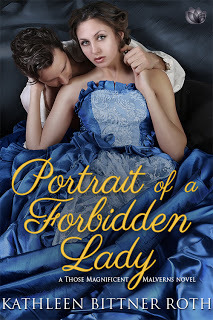 Kathleen Bittner Roth thrives on creating passionate stories featuring characters who are forced to draw on their strength of spirit to overcome adversity and find unending love. Her own fairy tale wedding in a Scottish castle led her to her current residence in Budapest, Hungary, considered one of Europe’s most romantic cities. However, she still keeps one boot firmly in Texas and the other in her home state of Minnesota. A member of Romance Writers of America®, she was a finalist in the prestigious Golden Heart® contest. Find Kathleen on Facebook, Goodreads, Twitter, Pinterest and www.kathleenbittnerroth.com.
Kathleen Bittner Roth thrives on creating passionate stories featuring characters who are forced to draw on their strength of spirit to overcome adversity and find unending love. Her own fairy tale wedding in a Scottish castle led her to her current residence in Budapest, Hungary, considered one of Europe’s most romantic cities. However, she still keeps one boot firmly in Texas and the other in her home state of Minnesota. A member of Romance Writers of America®, she was a finalist in the prestigious Golden Heart® contest. Find Kathleen on Facebook, Goodreads, Twitter, Pinterest and www.kathleenbittnerroth.com.
THE SEDUCTION OF SARAH MARKS is book one in Those Magnificent Malvern series: When a proper Victorian miss awakens next to a handsome stranger, she must rely on the man's benevolence as she struggles to regain her memory and hold onto her heart. BUY LINKPORTRAIT OF A FORBIDDEN LADY is book two in Those Magnificent Malvern series and is due to release in May 2016 (cover not yet available): A young widow returns to her childhood home after a forced absence and faces her first and only love, but despite their powerful attraction, danger compels her to remain his forbidden lady. PRE-ORDER YOUR COPY!
TAKING A HISTORICAL THERMAL BATH TODAYby Kathleen Bittner Roth
As an author, I can live anywhere. Currently, I reside in beautiful Budapest, Hungary. For how long, I do not know, but while I’m here, I am happily making the best of it.
Making the best of it?
OMG, what an understatement!
Budapest is such an amazing city. Merely stepping out my front door means a remarkable day is in the making. My tree-lined street is an enclave unto its own—venerable buildings adorned with statues and all manner of baroque ornamentation, a post office, hair salons, vegetable stands, restaurants, pubs, super market. A couple hundred feet to my right is a trolley stop. In minutes I can connect to all kinds of efficient transportation in the city.
But turn left out my front door, walk to the end of the block, and I’m in beautiful City Park where I can find a castle, a lake, a skating palace (in summer the water is used for boating), museums, restaurants, a zoo, and one of Hungary’s many famous thermal baths.
Did I say thermal baths?
Oh, yeah!
Budapest sits on a huge underground thermal lake so the city is thick with Turkish baths, some of which date back centuries. Stepping into them is like stepping into an Ottoman Palace. Here are my favorites:

Szechényi Baths: This thermal bath is my favorite. It is one of the largest spa complexes in Europe. And glory be, if this exquisite facility isn’t located in the park right down the street from me. A leisurely stroll and I am inside a grand neo-Baroque building, circa 1881.
There are indoor pools and outdoor pools at Szechenyi—fifteen to be exact, one of them being an Olympic size pool kept at swimming temperature. My favorite is the huge outdoor pool that roils with clouds of steam when the hot thermal air connects with the icy air in winter.
Public baths are cheap in Hungary, even cheaper if you have a doctor’s prescription for ailments such as an ailing back.
Masseuses will crank your muscles every which way for not much money, and there’s a bar there should you thirst for anything from water to mixed drinks.
Besides Szechenyi, here are a few of my favorite bath houses in Budapest:



Gellért Bath:Located along the banks of the Danube (the river separates Buda from Pest), the hot springs the bubbled up were used by the Turks as early as the 15th century! The baths have indoor and outdoor facilities and are connected to the famous Gellért Hotel. Photos don’t do this remarkable place justice.

Rudas Bath (pronounced Roo dosh):This thermal bath was built in the 16th century during the Turkish occupation and is still in operation! The tile work is amazing. There is an octagonal pool with a cupola that is sustained by eight pillars. The water in these baths is full of minerals and is therapeutic. A day-time outpatient hospital runs here with a complex physiotherapy department.

Lukacs Bath (pronounced Loo kotch):The baths operated during the time of the Turks, but in the 12th century, Knights in the Order of St. John used the thermal springs for healing purposes. They were followed by the Knights Orders of Rhodos and Malta and their monastery baths were built there.

Királyi Bath (pronounced Key rye):The construction of this bath was under the command of Arsian, the Pasha of Buda in 1565, but he died and his successor, Sokoli Mustafa had it completed. In 1796 the bath was purchased by the König Family. It was damaged during WWII. A complete renovation back to its original form such as the Konig Family had it built, took place in 1950.

Dagály Bath:The thermal water here comes from the Szechenyi Bath. This is a picturesque outdoor area with ten various pools. The “fancy” pool as it’s called offers a wide variety of facilities such as an effervescent bed, a whirling corridor, neck showers, splashing sunbathing, not to mention a spectacular view.
Where’s your favorite historical city or what city have you visited that has its special magic?If you are ever in Budapest, there is so much to see, but you must take time to visit at least one of these baths. It’s an experience you will never forget.
 Kathleen Bittner Roth thrives on creating passionate stories featuring characters who are forced to draw on their strength of spirit to overcome adversity and find unending love. Her own fairy tale wedding in a Scottish castle led her to her current residence in Budapest, Hungary, considered one of Europe’s most romantic cities. However, she still keeps one boot firmly in Texas and the other in her home state of Minnesota. A member of Romance Writers of America®, she was a finalist in the prestigious Golden Heart® contest. Find Kathleen on Facebook, Goodreads, Twitter, Pinterest and www.kathleenbittnerroth.com.
Kathleen Bittner Roth thrives on creating passionate stories featuring characters who are forced to draw on their strength of spirit to overcome adversity and find unending love. Her own fairy tale wedding in a Scottish castle led her to her current residence in Budapest, Hungary, considered one of Europe’s most romantic cities. However, she still keeps one boot firmly in Texas and the other in her home state of Minnesota. A member of Romance Writers of America®, she was a finalist in the prestigious Golden Heart® contest. Find Kathleen on Facebook, Goodreads, Twitter, Pinterest and www.kathleenbittnerroth.com.THE SEDUCTION OF SARAH MARKS is book one in Those Magnificent Malvern series: When a proper Victorian miss awakens next to a handsome stranger, she must rely on the man's benevolence as she struggles to regain her memory and hold onto her heart. BUY LINKPORTRAIT OF A FORBIDDEN LADY is book two in Those Magnificent Malvern series and is due to release in May 2016 (cover not yet available): A young widow returns to her childhood home after a forced absence and faces her first and only love, but despite their powerful attraction, danger compels her to remain his forbidden lady. PRE-ORDER YOUR COPY!
Published on March 01, 2016 00:00
February 29, 2016
Video of the Week: Americans Try An English Breakfast for the First Time
Are you hungry yet???
Check out Eliza Knight's Upcoming Releases!
Highlander UndoneTaken by the Highlander (in the Captured by a Celtic Warrior Anthology)Claimed by the Warrior
Check out Eliza Knight's Upcoming Releases!
Highlander UndoneTaken by the Highlander (in the Captured by a Celtic Warrior Anthology)Claimed by the Warrior
Published on February 29, 2016 03:00
February 22, 2016
Video of the Week: Nessie Caught on Tape
What do you think? Is Nessie real?
Check out Eliza Knight's New and Upcoming Releases!
Highlander UndoneTaken by the Highlander (in the Captured by a Celtic Warrior Anthology)Claimed by the Warrior
Check out Eliza Knight's New and Upcoming Releases!
Highlander UndoneTaken by the Highlander (in the Captured by a Celtic Warrior Anthology)Claimed by the Warrior
Published on February 22, 2016 03:00
February 17, 2016
Behind the Research Scenes of The King's Outlaw with Kris Kennedy
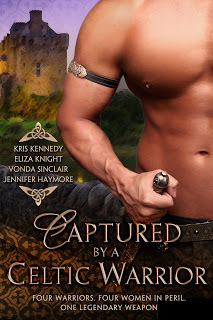 Welcome to History Undressed, guest author Kris Kennedy! I'm thrilled to have been part of an anthology with Kris that just released yesterday: Captured by the Celtic Warrior! Today, she's written a fun post on the history behind the dagger that features in our book! Enjoy!
Welcome to History Undressed, guest author Kris Kennedy! I'm thrilled to have been part of an anthology with Kris that just released yesterday: Captured by the Celtic Warrior! Today, she's written a fun post on the history behind the dagger that features in our book! Enjoy!
Hi, I’m Kris Kennedy, and I’ve got a little ‘Behind the Research Scenes’ glimpse for you, from THE KING'S OUTLAW, in the Captured by a Celtic Warrior anthology that I’m doing with fab authors Eliza, Vonda Sinclair, and Jennifer Haymore!
The story is set in 1193, deep in the era of crusading knights and questionable chivalry, and despite all my research on this time period already, while researching THE KING’S OUTLAW, I learned still more!
One of the coolest things I got to research was the history of the Hashashin, the real, original Assassins.
This were a Nizari sect of Islam that formed in 11th century, lead by the "Old Man of the Mountain." They were a military order, but conducted high-level espionage and political murders through one class of their order, the "fida'i." These were young men, highly trained in many arts and skills, from combat to linguistics to espionage techniques.
Although they often conducted extremely public murders of high-ranking figures, to terrifying effect, they primarily worked covertly, in secret and quiet. They would assimilate into the towns and social worlds around their targets, sometimes for months on end.
They were immensely fond of using daggers, sometimes poisoned, both as a weapon and as a threat. They were legendary for sneaking into the tents of political opponents at night and leaving a dagger and a note lying on the pillow or the floor, right beside the body of leader they'd stood beside, undetected, in the dark.
One of many stories of their exploits: In 1092, upon his coronation, the new sultan of the Seljuk empire rebuffed a Hashashin ambassador. Bad idea. He woke up one morning soon after with a dagger stuck in the ground beside his bed. He didn't say anything about it--who wants to announce a weakness like that??--but a little while later, a messenger from the Assassins arrived, saying, "Did I not wish the sultan well that the dagger which was struck in the hard ground would have been planted on your soft breast."
Gotcha. For the next several decades there was a ceasefire between the Nizaris and the Seljuk.
Saladin, the Crusaders best opponent, was repeatedly targeted by the Assassins, and finally came to terms. Many, many Crusading leaders did as well. In fact, almost a hundred years later, Prince Edward—later to become King Edward I of England, the ’Hammer of the Scots’—was wounded by a poisoned Assassin's dagger in 1271 while he was crusading!
The reason all this entered my research lens during the writing of THE KING’S OUTLAW for the CAPTURED BY A CELTIC WARRIOR anthology is because there’s a jeweled dagger that runs though all four of our stories. Since my story was appearing first, I knew I wanted to set up a compelling, exciting ‘tale for it. But I also had to keep the storyline relatively tight—no sprawling 400 pg epics here! And of course, it had to be über-sexy. All within a ‘captured’ theme. So, there I was, looking for a crusade-era story that did—or could—involve a dagger. And I found the Assassins.
In fact, not only did I find the Assassins, but I found them involved in the very public murder of about-to-be-crowned king of Jerusalem, Conrad of Montferrat, in 1192. And more not onlys…when captured, the surviving Assassin claimed that Richard the Lionheart, King of England, had hired them to murder Conrad. The perfect tie-in!
Sometimes research can feel external, like a layer atop the story, but I like it best when it shapes and informs the story, when it’s so integral to the unfolding events that you couldn’t transplant it to any other time period.
I didn't get to use my research on the Assassins as I would have liked, so I might have more crusades-related stories in my future!
For more info on the anthology:AmazonBarnes and NobleiBooks/ iTunesKobo
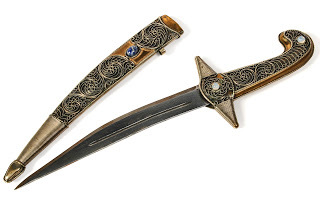
ABOUT KRIS KENNEDY…
Kris writes sexy, adventure-laden romances set in England and Ireland, during the ages when chivalry and knights reigned supreme. With hard alpha heroes, strong heroines, and loads of adventure, her books have won multiple awards, including DECEPTION, which received Romantic Times' Book Reviewers K.I.S.S. Hero Award, for the best historical hero of the year, and THE IRISH WARRIOR, which won the Romance Writers of America's® Golden Heart Award. To learn more about Kris, visit her website at http://kriskennedy.net, find her on Facebook at https://facebook.com/kriskennedybooks, and on Twitter @KrisKennedy. To get all the latest release news and deals, click here to sign-up for Kris's Book Alert newsletter.
Published on February 17, 2016 00:30
February 16, 2016
Presidents in Love by Tara Kingston
Welcome back to History Undressed our regular third Tuesday blogger, Tara Kingston! In honor of President's Day and Valentine's Day, Tara has written a fascinating post for us today. Enjoy!

Presidents in Love…by Tara Kingston
The study of America’s history is often told with facts and dates and names of places, with little attention paid to the people behind the events. When we speak of American Presidents, the focus is often on politics and accomplishments and scandals. But what about the bold, brilliant women who captured their hearts and stayed by their side throughout the years in the White House and beyond? What about…Presidents in love…
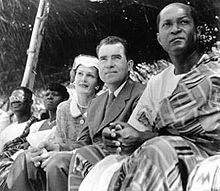
~ Richard and Pat NixonLong before Richard Nixon was dubbed “Tricky Dick” for his political strategies, it turns out he was a hopeless romantic. When he met a young teacher named Thelma “Pat” Ryan, it seemed a case of love at first sight. He courted the woman he called his “Irish gypsy” for two years before they married, following a proposal during which he’d placed an engagement ring in a basket filled with flowers.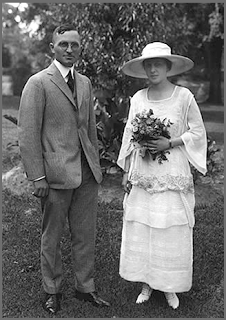
~ Harry and Bess TrumanHarry Truman courted his childhood crush Bess Wallace for years after they first met in Sunday School when Harry was six and Bess was five. During World War I, Bess carried his photo in her pocket while he went off to war. Harry and his “Dear Bessie” married in 1919. During their courtship, and the years afterward, they exchanged more than a thousand letters. In his youth, the man known as “Give ’em Hell, Harry” wrote this to the woman who would become his wife, “I suppose that I am too crazy about you anyway. Every time I see you I get more so if it’s possible…”
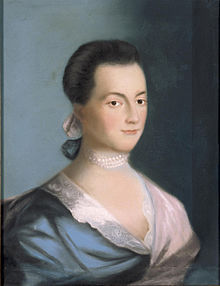
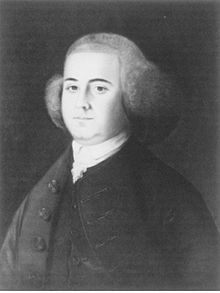
~John and Abigail AdamsJohn and Abigail Smith Adams corresponded for decades during their courtship and throughout the long separations they experienced after their marriage in 1764. In one missive, he refers to Abigail as “Miss Adorable”, while Abigail refers to John as her “dearest friend”. More than a thousand letters from their correspondence survive. Their love letters were commemorated in the 2001 Love series of United States postage stamps.

~Ronald and Nancy ReaganNancy Reagan’s collected love letters from the President in I Love You, Ronniedepict a love story that endured for decades. Reagan wrote poetry for his wife and sent adoring notes through their marriage, even while traveling on Air Force One, saying in 1983, “I more than love you…” Who was to guess that the man dubbed “The Great Communicator” was also such a romantic.

~ Lyndon and Claudia “Lady Bird” JohnsonLyndon Johnson was known as a savvy politician, but I suspect few saw his romantic side. During their whirlwind 1934 courtship, more than 90 letters were exchanged that provide a look at the love between Johnson and Lady Bird. In one missive dated October 23, 1934, Johnson wrote, “This morning, I am ambitious, proud, energetic and very madly in love with you.” Is it any wonder Lady Bird married Lyndon on November 17, 1934, a little more than two months after they first met on September 5, 1934?

~George H.W. Bush and Barbara BushOn their forty-ninth anniversary, George wrote to Barbara, “You give me joy that few men know. I’ve climbed perhaps the highest mountain in the world, but even that cannot hold a candle to being Barbara’s husband.” With a love like that, is it any wonder that the Bushes, the longest married couple in presidential history, celebrated their seventy-first anniversary on January 6.
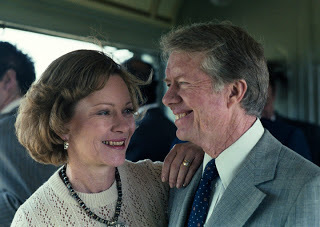
~ Jimmy and Rosalyn CarterThe Carters have employed an acronym to express their love since the 1940s, ILYTG – I Love You The Goodest. Jimmy even had a compact engraved with the letters. The Carters have been married for sixty-nine years.
The biographies of our nation’s leaders are filled with wonderful love stories. These are only a few that touched my heart. Presidents from George Washington through Barack Obama have created their own stories. Check out the resources listed at this end of this post for more heart-warming presidential love stories.
Resources:http://www.businessinsider.com/11-gre...
http://www.usnews.com/opinion/blogs/n...
http://www.history.com/news/romantic-...
Dear Bird: The 1934 Courtship Letters, http://archives.lbjlibrary.org/exhibits/show/34letters
http://www.smithsonianmag.com/history/harry-trumans-adorable-love-list-to-his-wife-bess-15753530/?no-ist
http://www.brides.com/blogs/aisle-say/2014/10/president-jimmy-carter-rosalynn-carter-marriage.htmlhttp://www.usnews.com/news/articles/2016-01-07/george-hw-and-barbara-bush-celebrate-71-years-of-marriage
https://www.mysticstamp.com/info/love-seriest/
All photographs are in the public domain.
About The Author:Award-winning author Tara Kingston writes historical romance laced with intrigue, danger, and adventures of the heart. A Southern belle-out-of-water in a quaint Pennsylvania town, she lives her own love story with her real-life hero in a cozy Victorian. The mother of two sons, Tara's a former librarian whose love of books is evident in her popping-at-the-seams bookcases. It goes without saying that Tara's husband is thankful for the invention of digital books, thereby eliminating the need for yet another set of shelves. When she's not writing, reading, or burning dinner, Tara enjoys cycling, hiking, and cheering on her favorite football team.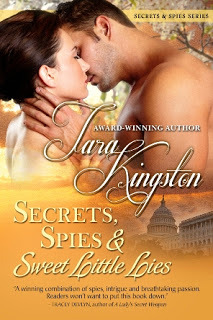 Connect with Tara at www.tarakingston.com and on Facebook: https://www.facebook.com/AuthorTaraKingston
Connect with Tara at www.tarakingston.com and on Facebook: https://www.facebook.com/AuthorTaraKingston
In a world where a man’s loyalty doesn’t depend on the color of a uniform, danger, intrigue, and passion are facts of life for the men and women of Tara’s Secrets & Spies series, historical romances set against the backdrop of the Civil War. Read it! Book One, SECRETS, SPIES & SWEETLITTLE LIES

Presidents in Love…by Tara Kingston
The study of America’s history is often told with facts and dates and names of places, with little attention paid to the people behind the events. When we speak of American Presidents, the focus is often on politics and accomplishments and scandals. But what about the bold, brilliant women who captured their hearts and stayed by their side throughout the years in the White House and beyond? What about…Presidents in love…

~ Richard and Pat NixonLong before Richard Nixon was dubbed “Tricky Dick” for his political strategies, it turns out he was a hopeless romantic. When he met a young teacher named Thelma “Pat” Ryan, it seemed a case of love at first sight. He courted the woman he called his “Irish gypsy” for two years before they married, following a proposal during which he’d placed an engagement ring in a basket filled with flowers.

~ Harry and Bess TrumanHarry Truman courted his childhood crush Bess Wallace for years after they first met in Sunday School when Harry was six and Bess was five. During World War I, Bess carried his photo in her pocket while he went off to war. Harry and his “Dear Bessie” married in 1919. During their courtship, and the years afterward, they exchanged more than a thousand letters. In his youth, the man known as “Give ’em Hell, Harry” wrote this to the woman who would become his wife, “I suppose that I am too crazy about you anyway. Every time I see you I get more so if it’s possible…”


~John and Abigail AdamsJohn and Abigail Smith Adams corresponded for decades during their courtship and throughout the long separations they experienced after their marriage in 1764. In one missive, he refers to Abigail as “Miss Adorable”, while Abigail refers to John as her “dearest friend”. More than a thousand letters from their correspondence survive. Their love letters were commemorated in the 2001 Love series of United States postage stamps.

~Ronald and Nancy ReaganNancy Reagan’s collected love letters from the President in I Love You, Ronniedepict a love story that endured for decades. Reagan wrote poetry for his wife and sent adoring notes through their marriage, even while traveling on Air Force One, saying in 1983, “I more than love you…” Who was to guess that the man dubbed “The Great Communicator” was also such a romantic.

~ Lyndon and Claudia “Lady Bird” JohnsonLyndon Johnson was known as a savvy politician, but I suspect few saw his romantic side. During their whirlwind 1934 courtship, more than 90 letters were exchanged that provide a look at the love between Johnson and Lady Bird. In one missive dated October 23, 1934, Johnson wrote, “This morning, I am ambitious, proud, energetic and very madly in love with you.” Is it any wonder Lady Bird married Lyndon on November 17, 1934, a little more than two months after they first met on September 5, 1934?

~George H.W. Bush and Barbara BushOn their forty-ninth anniversary, George wrote to Barbara, “You give me joy that few men know. I’ve climbed perhaps the highest mountain in the world, but even that cannot hold a candle to being Barbara’s husband.” With a love like that, is it any wonder that the Bushes, the longest married couple in presidential history, celebrated their seventy-first anniversary on January 6.

~ Jimmy and Rosalyn CarterThe Carters have employed an acronym to express their love since the 1940s, ILYTG – I Love You The Goodest. Jimmy even had a compact engraved with the letters. The Carters have been married for sixty-nine years.
The biographies of our nation’s leaders are filled with wonderful love stories. These are only a few that touched my heart. Presidents from George Washington through Barack Obama have created their own stories. Check out the resources listed at this end of this post for more heart-warming presidential love stories.
Resources:http://www.businessinsider.com/11-gre...
http://www.usnews.com/opinion/blogs/n...
http://www.history.com/news/romantic-...
Dear Bird: The 1934 Courtship Letters, http://archives.lbjlibrary.org/exhibits/show/34letters
http://www.smithsonianmag.com/history/harry-trumans-adorable-love-list-to-his-wife-bess-15753530/?no-ist
http://www.brides.com/blogs/aisle-say/2014/10/president-jimmy-carter-rosalynn-carter-marriage.htmlhttp://www.usnews.com/news/articles/2016-01-07/george-hw-and-barbara-bush-celebrate-71-years-of-marriage
https://www.mysticstamp.com/info/love-seriest/
All photographs are in the public domain.
About The Author:Award-winning author Tara Kingston writes historical romance laced with intrigue, danger, and adventures of the heart. A Southern belle-out-of-water in a quaint Pennsylvania town, she lives her own love story with her real-life hero in a cozy Victorian. The mother of two sons, Tara's a former librarian whose love of books is evident in her popping-at-the-seams bookcases. It goes without saying that Tara's husband is thankful for the invention of digital books, thereby eliminating the need for yet another set of shelves. When she's not writing, reading, or burning dinner, Tara enjoys cycling, hiking, and cheering on her favorite football team.
 Connect with Tara at www.tarakingston.com and on Facebook: https://www.facebook.com/AuthorTaraKingston
Connect with Tara at www.tarakingston.com and on Facebook: https://www.facebook.com/AuthorTaraKingstonIn a world where a man’s loyalty doesn’t depend on the color of a uniform, danger, intrigue, and passion are facts of life for the men and women of Tara’s Secrets & Spies series, historical romances set against the backdrop of the Civil War. Read it! Book One, SECRETS, SPIES & SWEETLITTLE LIES
Published on February 16, 2016 00:00



